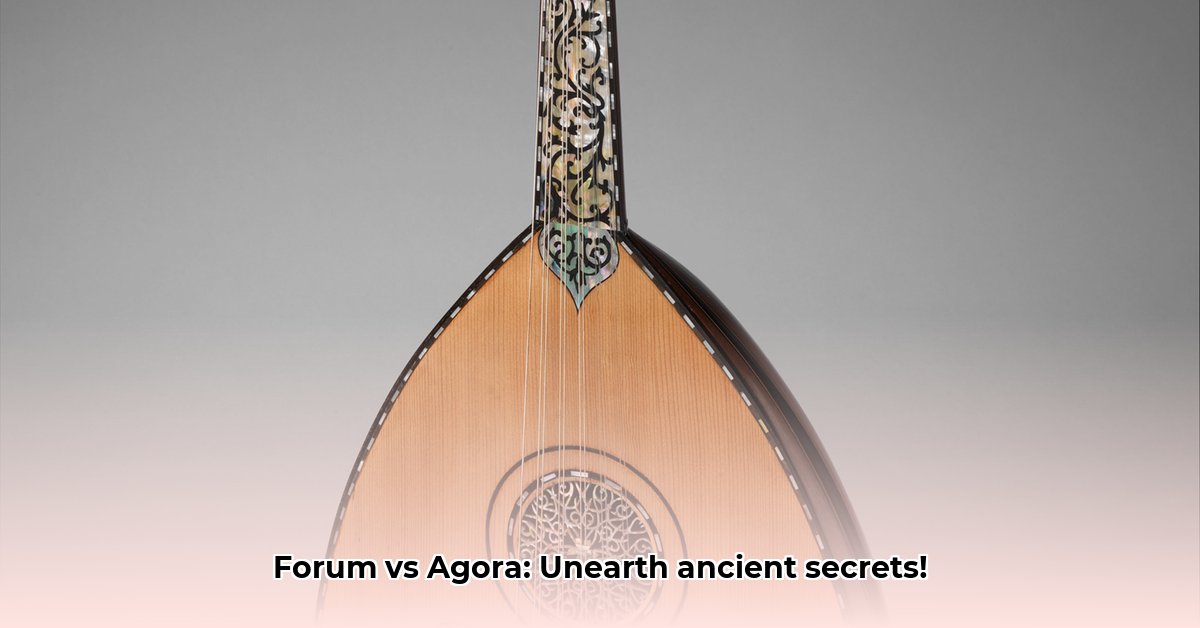
Oud Romeins Plein (Forum) and the Greek Agora: A Tale of Two Public Spaces
So, tjommies, ever pondered the heart of ancient cities? We often hear about the forum and the agora, but what were they actually like? More than just bustling marketplaces, these spaces were the vital organs of ancient societies, influencing everything from politics to social life. This deep dive compares and contrasts Roman fora and Greek agorae, revealing how their design and function reflected the distinct cultures and political systems of Rome and Greece.
The Heart of the City: More Than Meets the Eye
Both fora and agorae served as central public spaces – the places to be in their respective cities. They were where daily life unfolded: citizens bought and sold goods, debated weighty political matters, held religious ceremonies, and simply socialised. Their central location made them easily accessible to all. Think of them as ancient versions of our modern town squares, but on a grander and much more significant scale. Did you know, for instance, that the sheer number of people who frequented these spaces daily would likely be similar to the average foot traffic in a busy modern-day city centre?
The Roman Forum: A Majestic Display of Power
The Roman forum, and especially the Oud Romeins Plein, wasn't just a meeting place; it was a potent symbol of Roman power and control. Typically rectangular and meticulously planned, its layout reflected Rome's highly structured, hierarchical society. Imagine rows of imposing structures: basilicas for legal proceedings (like our courts), temples for religious activities, and curiae for Senate meetings. These weren’t simply buildings; they were powerful statements of imperial authority. The forum served as the stage for official announcements, military parades, and public displays showcasing Roman dominance. Consider the sheer scale of many Roman fora; some occupied vast areas, underscoring their importance in Roman life.
The Greek Agora: Democracy in Action
The Greek agora, however, offered a contrasting atmosphere. Often irregularly shaped and developing organically over time, it felt less regimented, more spontaneous. While also a place for trade and religious festivals, its true significance lay in its role in the political life of the Greek poleis (city-states). It was where citizens gathered to discuss issues, debate policies, and participate directly in governance. This open space fostered a more democratic environment – a stark difference from the Romans' emphasis on centralised authority. This democratic spirit is reflected in the organic growth of many agorae, which developed naturally over time, rather than being planned according to rigid schemes.
Architectural Styles: Form Reflecting Function
The differing architectural styles perfectly mirror these fundamental differences. Roman fora displayed organised grandeur, with imposing buildings arranged in a purposeful manner. Greek agorae, conversely, were more fluid, featuring open spaces ideal for impromptu gatherings and dialogues. A Roman forum resembled a carefully orchestrated symphony, while a Greek agora was a vibrant, improvisational jazz performance. The differences in aesthetic and planning go beyond mere appearance; they reflected the societies that built and used these spaces.
Societal Impact: Shaping Identities and Interactions
The influence of these public spaces extended far beyond their physical boundaries. They shaped social interactions, political debates, and even the very identities of those who used them. The Roman forum, with its focus on order and control, mirrored the Empire's centralised government. The Greek agora, emphasizing open debate and participation, reflected the more grassroots, democratic nature of Greek life. Both, however, were essential for the daily functioning and cultural identity of their respective societies. How did this impact social interactions? Imagine the many opportunities for both formal and informal interactions that occurred within these locations.
A Concise Comparison: Fora and Agorae Side-by-Side
To summarise the key distinctions:
| Feature | Roman Forum | Greek Agora |
|---|---|---|
| Layout | Rectangular, meticulously planned, formal design | Irregular, evolving organically, open spaces |
| Main Function | Political displays, legal matters, commercial activity | Commercial activity, political assembly, social gatherings |
| Architectural Style | Grand, imposing buildings, structured and symmetrical | More fluid design, open spaces, less formal |
| Governance Style | Highly centralized, imperial power | Decentralized, participatory governance |
| Atmosphere | Formal, structured, displays of power | More relaxed, open to spontaneous interaction |
| Oud Romeins Plein | A prime example of a highly structured Roman forum | - |
Ongoing Research and Unanswered Questions
Despite considerable knowledge gained, much about fora and agorae remains to be discovered. Ongoing archaeological research continuously refines our understanding of these fascinating spaces. Some scholars posit that the functions of fora and agorae might have overlapped or evolved over time, depending on the specific city and historical period. Research into the social dynamics and daily life within these locations is an ongoing pursuit, constantly revealing new and insightful information on the daily functioning of these ancient spaces. For instance, recent finds have revealed evidence of informal gatherings within more formal settings.
In closing, both the forum and the agora stand as powerful symbols of their respective civilizations. They are more than just historical ruins; they offer invaluable insights into the hearts and minds of the people who inhabited these ancient worlds, providing important evidence for the understanding of daily life and governance in these incredibly important historical periods.